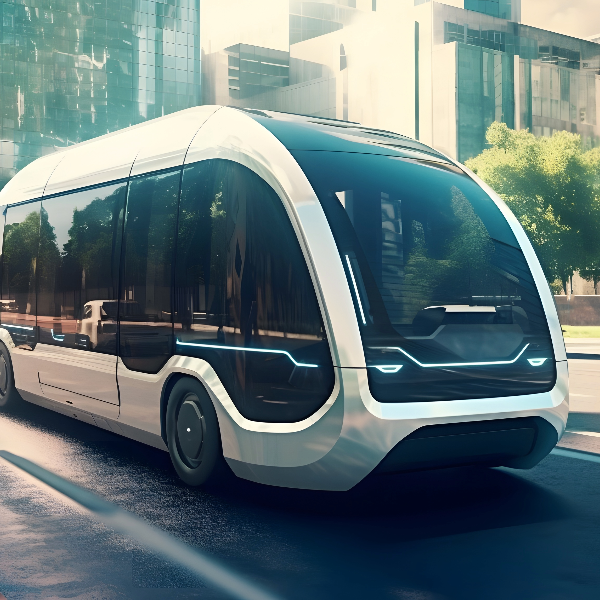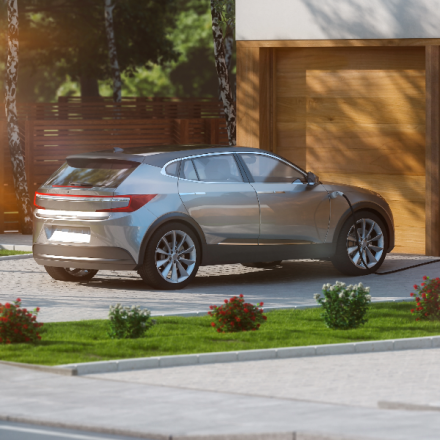Smart Cities
Future of Urban Living & Sustainable Dev.
By: Cate Brown
Read Time: 4 Minutes

City lights have always beckoned dreamers. The promise of hustle, opportunity, and life lived at a fast pace has drawn many to the magnetic pull of urban landscapes. But today's cities are not just about towering skyscrapers; they're getting smarter, sleeker, and more sustainable. Dive with us into the transformative world of smart cities and the evolving face of urbanization.
Adaptive Infrastructure: Building Responsive Urban Environments
Urbanization has been a continuous process throughout history, as people have always been attracted to cities in search of improved living standards, better employment opportunities, and access to social services. However, with the advancement of technology, urbanization has undergone significant changes in recent years.
- Adaptive Infrastructure: One of the most noticeable changes is the emergence of adaptive infrastructure. Cities are no longer just a cluster of buildings, streets, and bridges but are evolving into a digital haven. Incorporating sensors into these structures makes them more responsive and adaptive to the needs of the people living in the city. The real-time data collected from these sensors can be analyzed to improve the performance of these structures, making them more efficient and effective.
- Data in Every Corner: Another significant change is collecting and analyzing data from every corner of the city. With the help of IoT technology, data can now be collected from various sources, including buildings, vehicles, and even people. This information can be analyzed to gain insights into people's behavior, traffic patterns, energy consumption, and other factors that affect the quality of life in the city. This information can be used to improve urban planning, optimize resource allocation, and help city authorities make informed decisions.
The impact of technology on urbanization is transforming the concrete jungle into a more innovative and efficient digital haven, making cities more livable, sustainable, and responsive to the needs of the people.
Smart Homes and Sustainable Transit: A Glimpse into the IoT-Powered City
- Connected Homes: Can you imagine living in a home where all the devices are interconnected and can communicate? The possibilities are endless. For instance, your fridge can detect when you're running low on eggs and automatically add it to your grocery list or remind you to pick up a carton on your way home. Your thermostat can adjust the room's temperature based on your preferences and schedule. You can even set it up to turn on the air conditioning when you return home.
- Sustainable Transit: Smart traffic lights can help reduce traffic congestion by adapting to traffic flow. They use sensors and cameras to detect the number of cars on the road and adjust the timing of the lights accordingly. This not only reduces traffic but also helps to lower emissions from idling vehicles.
- Digital Public Spaces: The cityscape is also dotted with electric vehicle charging stations, making it easier for people to travel in an environmentally friendly way. With more and more people switching to electric vehicles, these charging stations are becoming increasingly important.

Public spaces like parks and other recreational areas have free Wi-Fi, interactive digital kiosks, and sensor-enabled lighting. This not only enhances safety and accessibility but also provides an opportunity for people to connect and engage with their community. For example, they can use the Wi-Fi to access information about local events or the interactive kiosks to learn about the area's history. The sensor-enabled lighting is energy-efficient and improves safety by illuminating the park at night.
Sustainable, Safe, and Smart: The Benefits of Urban Connectivity
- Enhanced Sustainability: Smart cities are designed to prioritize sustainability, focusing on green initiatives that help reduce the environmental impact of urban living. Waste management systems are optimized to ensure that recycling is maximized, decreasing the amount of waste in landfills. Buildings are also designed to be energy-efficient, with elements such as solar panels, energy-efficient lighting, and smart heating and cooling systems that help to reduce energy consumption.
- Safety & Security: Besides sustainability, smart cities prioritize safety and security. Integrated surveillance systems are used to monitor public spaces, and emergency response units are connected in real time to ensure that help is available quickly in an emergency. Municipal services are also digitally streamlined, making it simple for residents to access the services they need.
- Elevated Quality of Life: By prioritizing sustainability and safety, smart cities can help elevate the quality of life for their residents. With everything interconnected, residents enjoy efficient public services, reduced traffic congestion, cleaner environments, and an enhanced urban living experience. This includes everything from well-maintained parks and public spaces to reliable public transportation systems that help reduce the city's overall carbon footprint.
The story of urbanization promises an exciting and tech-forward future. With intelligent technology integration, tomorrow's urban dwellers will experience a more seamless, synchronized, and sustainable life. Behind the bright city lights lies a web of innovation that will make urban living safer, smarter, and more balanced. Welcome to the future of urbanization, where the possibilities are endless!






